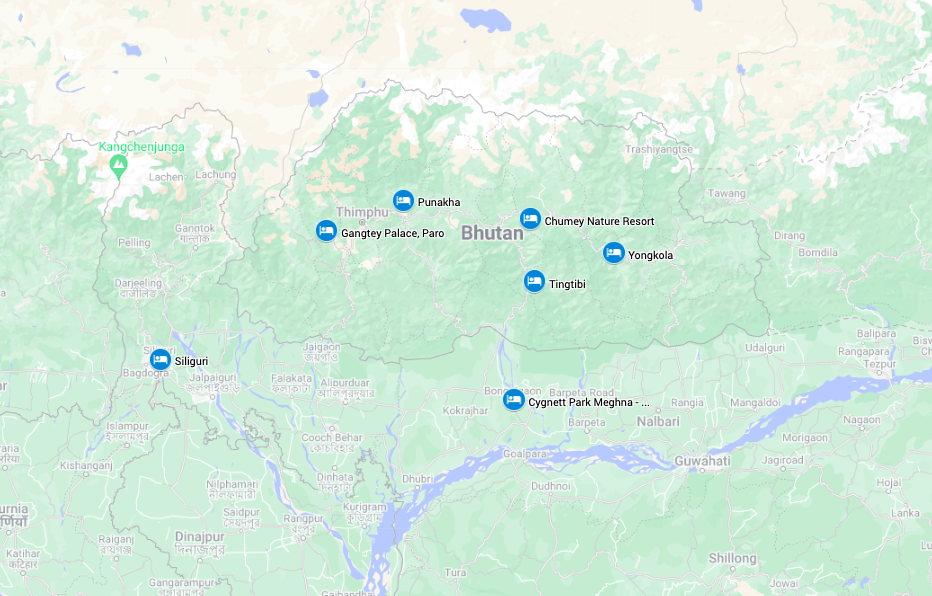- Overview
- Full Itinerary
- Extensions
- Photo Gallery
- Costing
- Travel Details
- Trip Reports
- Guides
- Map
- Know Before You Go
Travel to the Kingdom of Bhutan with Peg Abbott on this exciting inaugural tour. Nestled between India and China, biodiverse Bhutan is home to seven percent of the world’s bird species. Roughly the size of Switzerland, it is naturally dramatic, rising from the lowland rainforest of the Indian-Malay subcontinent to Himalayan heights far above treeline, its mountains interspersed with valleys carved by fast-moving rivers. Bhutan’s elevation ranges from 315 feet to a staggering 24,500 feet above sea level.
This Buddhist kingdom is also a conservation champion, with a quarter of its lands protected by national parks and a constitutional decree that no less than 60 percent of the country should be covered in forest. More than 70 percent of it is now richly forested, an important reason some 700 birds call Bhutan home. Bhutan birds include many of the largest and most distinctive birds in Asia, and many riotously colorful and charismatic ones as well, including hornbills, sunbirds, parrotbills, wren-babblers and laughingthrush, to name just a few.
Though we would be very lucky to see them, Bhutan is haven to endangered Bengal Tiger and threatened Snow Leopard, which prowls its snowy mountain peaks above treeline and Clouded Leopard, which takes over the apex predator role in rainforest jungles. Bhutan is also home to many striking mammals we hope to see, including the beautiful and endangered Golden Langur monkey, Indian (One-horned) Rhinoceros and Asian Elephant. Our tour is also very culturally rich, and we visit architecturally marvellous Buddhist fortress-monasteries, locally called “dzong,” and may have the opportunity to interact with traditionally robed monks and their devotees in training. Bhutan is known as the “Land of the Thunder Dragon,” which adorns the national flag and is emblematic of the mysticism that pervades this fascinating culture.




Tour Highlights
- Marvel at some of the most spectacular scenery anywhere in the world, including mountain peaks approaching 25,000 feet as gorgeous backdrop to our birding.
- Visit at the height of the rhododendron bloom, a special experience in a country with nearly 50 species found both in the wild and cultivated in special parks in Thimphu and Punakha. Bhutan’s rhododendron season is a riot of color.
- Enjoy tremendous diversity of birdlife thanks to our tour’s varied altitudes and habitats as we cross this Himalayan nation, ranging from lowland rainforest at 500 feet to mountain passes well above treeline at 13,000 feet. Special groups of birds here include some of the world’s largest hornbills, a half dozen species of laughingthrush, charismatic wren-babblers and parrotbills, and many glorious sunbirds.
- Marvel at bird superstars, including technicolor Himalayan Monal, Satyr Tragopan, endangered White-bellied Heron, Black-necked Crane, Rufous-necked Hornbill, Fire-tailed Myzornis, Ibisbill, Beautiful Nuthatch, and gorgeous Ward’s Trogon.
- Admire traditional architecture and visit Buddhist fortress-monasteries known locally as “dzong,” in this highly devout country. Prayer flags flapping in the breeze are ubiquitous in the settled (not really urban) areas we visit, imbuing our journey with a unique sense of place.
- Travel adventurously with us, birding the single road that crosses this sparsely populated country, thrilling at mixed flocks in its most productive habitats.
- Cross your fingers and toes as we search for White-bellied Heron, one of the most critically endangered bird in the world.
- Keep an eye on the skies for one of thirty raptors found in Bhutan, including Changeable Hawk Eagle, Crested Serpent Eagle, Himalayan Vulture, Steppe Eagle, Long-legged Buzzard, and Pallas’ Fish Eagle.




Trip Itinerary
Itineraries are guidelines; variations in itinerary may occur to account for weather, road conditions, closures, etc. and to maximize your experience.
Mon. April 10: New Delhi | Guwahati | Drive to Bongaigaon
Welcome to India! Please arrive at the New Delhi airport no later than 4:00 AM today. We encourage you to arrive a day or two early to rest up from your travels and make sure you’re on time for our internal flight today.
On arrival at the New Delhi airport, we are met by our local Indian guide and connect to our flight to Guwhati Airport in the far northeast section of the country, where we drive to Bongaigaon near the border of Bhutan.
We check into our hotel and have a relaxed afternoon and join the others in the group who were on the Manas National Park pre-tour extension.
Accommodations at Cygnette Park Meghna (D)
Tues. April 11: Bongaigaon | Gelephu | Tingtibi
Today after breakfast, we drive to the Gelephu border crossing and after the urban bustle of northern India this will truly feel like crossing into another world. And it is!
As we work our way through the forested hills, we begin to see mixed feeding flocks making their way through the canopy of the forest, spurring great excitement. These mixed-species flocks are our goal and are what we are looking for and anticipating. This phenomenon can be spectacular, because for most of us, every species is new! We see birds like Fire-breasted Flowerpecker, Green-tailed, Black-throated, and Crimson Sunbirds, Maroon Oriole, Bronzed and Hair-crested Drongos, Square-tailed Drongo-cuckoo, Great and Golden-throated Barbets, Black-winged Cuckooshrike, Grey-chinned Minivet, Silver-eared Mesia, Striated, White-naped and Black-chinned Yuhinas, Oriental White-eye, Sultan Tit ,and Yellow-cheeked Tit. Some species are a challenge, reluctant to drop down from the canopy or out of thick tangles of branches, but we are persistent in the pursuit!
Once we reach Tingtibi, we settle into our very comfortable but functional lodge.
Accommodations at T Wang Guest House (B,L,D)
Wed. April 12: Birding Tingtibi
This morning we bird the area along the Gomphu Road, Bhutan’s only major road from the east to west within the county. We delight in the freshness in the air! One of the very important birds in this area is the large and critically endangered White-bellied Heron. There have been recent reports of nesting herons here and we cross our fingers (and toes) that we get the chance to see this super rare bird. The White-bellied Heron inhabits undisturbed rivers and wetlands in the foothills of the eastern Himalayas in northeast India and Bhutan to northern Myanmar. It has been listed as Critically Endangered on the IUCN Red List since 2007 because the global population is estimated at less than 300 mature individuals and threatened by habitat loss and human disturbance.
Accommodations at T Wang Guest House (B,L,D)
Thurs. April 13: Birding Tingtibi
We have another day to bird this beautiful mid-altitude forest, exploring the bamboo and moss-covered strands of pristine forest. Bird highlights this morning may include White-browed Scimitar-Babbler, Grey-throated Babbler, Nepal Fulvetta, White-bellied Erpornis, White-browed Piculet, Black-naped Monarch, Indian Paradise-Flycatcher, Black-crested Bulbul, Sultan Tit, Black-throated Prinia, Crimson Sunbird, Ashy Woodswallow, and Crested Goshawk.
After lunch and a midday break in the warm lowland temperatures, we set out again in the afternoon to an area that falls within Royal Manas National Park, with several key species such as Blue-bearded Bee-eater, Lesser Necklaced Laughingthrush, and Collared Owlet amongst the many that we see.
Accommodations at T Wang Guest House (B,L,D)
Fri. April 14: Tingtibi | Yongkola
We kick off the morning with roadside birding, and work to find mixed feeding flocks before we head north towards Zhemgang. We spend time birding along the road in the moss-draped, mid-altitude broadleaved forests of the foothills across a range of elevations. As we enter the remarkable forests, we scan the understory vegetation, stands of thick bamboo, streambanks, and the sky for a good selection of lower elevation species in superb habitat. Some of our most sought after species include Kalij Pheasant, Streaked Spiderhunter, Slaty-backed Forktail, Red-breasted Pied-flycatcher, Blue Rock Thrush, Indian Blue Robin, White-hooded Babbler, White-crested Laughingthrush, Rufous-necked Hornbill, Blue-throated Barbet and Crested Serpent-Eagle (with a whole lot more!). We make several birding stops in route to our next lodge, as well as a stop for snacks and tea toward Panbang. Our leader decides the lunch stop and then we keep moving up into one of the most beautiful habitats in Asia. Once you reach Yongkola we check in at our simple but strategically located lodge. Settle in, enjoy drinks and snacks, then bird the local patch before dinner.
Accommodations at Trogon Lodge (B,L,D)
Sat. April 15: Yongkola
We set out early this morning, continuing to climb in altitude, surrounded by lush forests and waterfalls. Some of our we hope to see Tawny Fish-Owl, Sultan Tit, Himalayan Bulbul, Golden Babbler, Gold-naped Finch, Yellow-breasted Greenfinch, Crested Bunting, Asian Barred Owlet, and more. This area throws some pleasant surprises and we may even have a chance at seeing mammals like Himalayan Black Bear or a Common Leopard if we’re lucky.
Accommodations at Trogon Lodge (B,L,D)
Sun. Apr. 16: Yongkola
We have another early morning today. We drive through lush, mid-altitude subtropical broad-leafed forest, rich in moss, lichens, orchids, and ferns. This is ideal habitat for many species characteristic of the Eastern Himalayas and is one of the finest birding areas throughout the entire Himalayan chain. We search for Beautiful Nuthatch, Himalayan Cutia, Red-headed Trogon, Bay Woodpecker, Black-throated Parrotbill, Blue-bearded Bee-eater, and possibly Black Eagle.
Weather permitting, tonight we try for nocturnal birds like Hodgson’s Frogmouth, Himalayan Wood Owl, Brown Wood Owl and possibly a few mammals like the endemic Bhutan Giant Flying Squirrel before returning for dinner.
Accommodations at Trogon Lodge (B,L,D)
Mon. April 17: Yongkola | Chumey
We have an early departure this morning as we make our way northwards on what has been called the most scenic road in Bhutan, which is also a hotspot for Red Panda and spectacular birds such as Satyr Tragopan and Blood Pheasant. We cross two more high mountain passes and then travel down to the Ura Valley, known for its spectacular rhododendron bloom. From here we cross the Shertang La on a new road from which we can hopefully get a good view of Gangkar Puensum, the world’s highest unclimbed mountain (24,757 feet). Once we arrive in the Bumthang region we make our way west to the Tharpaling Monastery. For birders, this is an interesting place (apart from the cultural value). The monks here co-habit the space with Himalayan Monal and occasionally Satyr Tragopan. We enjoy a tour of the monastery and then wait for the birds to arrive in the late afternoon.
Accommodations at Chumey Nature Resort (B,L,D)
Tues. April 18: Punakha
Guide’s choice, we may do an early morning re-visit to Tharpaling to circle back for birds we may have missed or missed out on close views of. Or we start early and keep driving west to the Trongsa area where we make a stop at the Dzong. Our drive is through the heart of the Black Mountains, with frequent birding stops to appreciate the beauty of the area and the magnificent birdlife. We drive past the Pele La at an elevation of 11,220 feet. We may decide to visit the Pele La, birding for a while on this abandoned road for some time before we resume travel. We can expect to see birds like Himalayan Cutia, White-browed Shortwing, Rufous-winged Fulvetta, Chestnut-crowned Laughingthrush, Red-tailed Minla, Rufous Sibia, Fire-tailed Myzornis, Rusty-flanked Treecreeper, Yellow-bellied Fantail, Mrs. Gould’s Sunbird, Gold-naped Finch, and Himalayan Vulture.
Accommodations at Zingkham Resort (B,L,D)
Wed. April 19: Punakha
An early start from Punakha takes us to the Jigme Dorji National Park, a dramatic and beautifully scenic park of snow-capped peaks and lush mountain valleys. Though this park is known to host Snow Leopards and Bengal Tigers, we would have to be quite lucky to see one of these precious big cats. The park is also home to the bizarre Takin, as well as 30 or so other mammals. We explore the area on foot, looking for birds like Golden-throated Barbet and Black-winged Cuckooshrike. We hope to have the chance to visit Lamperi, too, looking for birds like Black Eagle, Wedge-tailed Green-pigeon, Asian Koel, Asian Emerald Cuckoo, and Nepal Fulvetta,
Back in Punakha, we enjoy a privately guided visit to the impressive Punthang Dechen Phodrang, or 'Palace of Great Bliss', the winter home of Bhutan’s spiritual leader and over 350 monks. More commonly known simply as Punakha Dzong, this fortress is one of the most beautiful in the country, built in 1637 between the confluence of the Pho Chu and Mo Chu rivers.
Accommodations at Zingkham Resort (B,L,D)
Thurs. Apr. 20: Punakha | Thimphu | Paro Valley
This morning we depart for Thimphu, climbing into the Dochu La pass at 10,335 feet, which provides us with fabulous views of Bhutan’s seven highest Himalayan peaks, all above 23,000 ft. We also stop at the botanical garden on the opposite side of the pass. At the pass, we spend some time birding in the mixed forest of pine, rhododendron, and evergreen oak, and with luck we see a number of interesting birds like the Fire-tailed Myzornis, Yellow-billed Blue Magpie, Chestnut-capped Babbler, and Ultramarine Flycatcher. Gradually we move towards Thimphu, arriving in time for a walk around this fascinating town, whose entrance is overlooked by the 169-foot-tall gilded-bronze Great Buddha Dordemma. We take time to look for Black-tailed Crake in nearby bogs and then continue to drive to the Paro Valley where we check into our
lodge and relax for the rest of the evening.
Accommodations at Gangtey Palace (B,L,D)
Fri. April 21: Paro Valley
This morning we set off early and drive to Chele La, about 13,000 feet, with hopes of seeing the region’s renowned pheasants such as Satyr Tragopan, Himalayan Monal, and Blood Pheasant. Other birds include Spotted Nutcracker, and White-winged Grosbeak. After our morning birding we enjoy a delicious Bhutanese meal at a traditional farmhouse. After lunch we head back to town and some of our group may consider a hike halfway up the Tatskang Monastery where there is a café with great views. Enjoy the sweeping scenery, then walk back to the base and return to the hotel for the night.
Accommodations at Gangtey Palace (B,L,D)
Sat. April 22: Paro | Siliguri
After breakfast this morning we have a short, privately guided tour of town, stopping at the textile museum and the Rinpung Dzong. Today is essentially a travel day, with a five-hour drive to Phuentsholling where we cross the border back into India, then resume for an additional three hours en route to Siliguri. Our hotel tonight is conveniently located adjacent to the airport for our flight back to New Delhi tomorrow.
Accommodations at Marriott Siliguri or similar (B,L,D)
Sun. April 23: Siliguri | Bagdogra | New Delhi | Departures
After breakfast, we’re driven to the airport to connect to the flight to New Delhi. On arrival at the international airport, we say our goodbyes before you connect to your international flight home. Please plan international flights out after 11:00 PM. (B)
Highlights of the Tour: Birds, Mammals, Plants & Butterflies We Hope to See
Bird Highlights: Rufous-necked Hornbill, Satyr Tragopan, Blood Pheasant, Himalayan Monal, Spotted Elachura, Spotted Laughingthrush, Brown Parrotbill, Great Parrotbill, Fire-tailed Myzornis, Gray-sided Laughingthrush, Scaly Laughingthrush, Red Tailed Minla, Red-faced Liocichla, , White-tailed Robin, Hodgson’s Redstart, Mrs. Gould’s Sunbird, Grandala, Crimson-breasted Woodpecker, Bay Woodpecker, Rosy Minivet, Sultan Tit, Fire-capped Tit, Wallcreeper, Himalayan Cutia, Beautiful Nuthatch, Yellow-rumped Honeyguide, Ward’s Trogon, Black-eared Shrike Babbler, Emerald Cuckoo, Ibisbill, Black-tailed Crake, Wedge-tailed Pigeon, Hodgson’s Frogmouth, Himalayan Owl, Brown Wood Owl, Tawny Fish Owl, , Golden Eagle, Collared Falconet, Lammergeier, Solitary Snipe, Barred Cuckoo Dove, Brown Dipper, Rufous-faced Warbler, Slaty-bellied Tesia, Chestnut-headed Tesia, Striated Yuhina, Slender-billed Scimitar Babbler, Red Crossbill, Tibetan Serin,
Mammal Highlights: Capped, Golden and Nepal Grey Langurs, Assamese Macaque, Yellow-throated Marten, Black Giant, Hodgson's Flying and Red Giant Flying Squirrels, Moupin Pika Royles’ Pika, Large-eared Pika, Sambar, Indian Muntjac, Himalayan Serow, Rare: Himalayan Weasel, Red Panda, Himalayan Black Bear, Wild Dog, Leopard
Plant Highlights: (Bloom depends on showers but broadly these flowers should be starting to bloom) Roscoea bhutanica, Spiranthes sinensis and Gentiana cf. bryoides, Bidens pilosia, Datura starmonium, Persicaria nepalensis, Tagetes minuta, Ipomoea purpurea, Osbeckia stellata, Persicaria nepalensis, Luculia gratissima, Mussaenda roxburgiiJusticia adhatoda, Leptodermis amoena, Cyanotis vaga, Mazus surculosus, Phytolaccaceae acinose, Premus carmesina, Notholirion macrophyllum, Malus baccata, Colquhounia coccinea, Berberis asiatica, Bidens pilosa, Anemone rivularis, Datura starmonium, Pieris Formosa, Persicaria nepalensis, Impatiens cristata, Tagetes minuta, Artemisia absinthium, Ipomoea purpurea, Primula denticulate, Osbeckia stellata, Sambuacus adnate, Taxillus kaemferi, Pinus wallichiana, Pinus roxburghii, Usnea longissima, Primula sikkimensis, Megacodon stylophorus, Pyrola sikkimensis, Meconopsis paniculate, Meconopsis horridula, Meconopsis simplificifolia, Anemone rubicola, Adrosace strigillosa, Gueldenstaedtia himalaica, Primula obliqua, Rhododendron lepidotum, Aerisema jaquemontii, A. flavum, Thermopsis barbata and Lilium nanum f. flavidum, Cypripedium tibeticum.
Butterfly Highlights: Bhutan Blackvein, Plain Puffin, Pioneer, Red-breast Jezebel, Hill Jezebel, Redspot Jezebel, Red-base Jezebel, Great Orange-tip, Redspot Sawtooth, Spotted Sawtooth, Plum Judy, Double-banded Judy, Dark Judy, Striped Punch, Lesser Punch, Orange Punch, Punchinello, Green Sapphire, Purple Sapphire, Dark Sapphire, Powdery Green Sapphire, Azure Sapphire, Common Copper, Angled Sunbeam, Bright Sunbeam, Malayan Sunbeam, Common Gem, Common Hedge Blue, Indigo Flash, Long-banded Silverline, Common Tinsel, Powdered Oakblue, Centaur Oakblue, Himalayan Blue Imperial. Green Duke, Common Raven, Circe, Common Blue Apollo, Common Crow, Common Flash, Common Line Blue, Common Nawab, Dark Judy, Great Orange Tip, Great Orange Tip, Indian Cabbage White, Indian Purple Emperor, Large Cabbage White, Plain Tiger, Popinjay, Red-Spot Jezebel, Spangle, Stately Nawab, Common Nawab
Manas NP Pre-Tour Extension
Itineraries are guidelines; variations in itinerary may occur to account for weather, road conditions, closures, etc. and to maximize your experience.
Fri. April 7: Arrivals in New Delhi | Guwahati | Manas National Park
Welcome to India! Please plan to arrive in New Delhi no later than 4:00 AM today. We encourage you to come in a day or two early to rest up from your travels and to ensure you don’t miss the domestic flight we have scheduled for today.
You are met by our local guide and connect for our flight to Guwahati. We then drive for about three and a half hours toward Manas National Park. We bird along the way, with common sightings that could include Oriental Magpie-Robin, Asian Pied Starling, Indian Roller, with Brahminy and Black Kites. We may also see Lesser Adjutant and with some great luck maybe a Greater Adjutant. Once we arrive at Manas, we check in at the lodge. Occasionally Asian Barred Owlet and Brown Boobook can be heard and seen around the lodge in the evening.
Accommodations at Musa Jungle Resort (D)
Sat. & Sun. April 8 & 9: Full Day Jeep Safaris
Over the next two days, we enjoy adventures on safari in the park, exploring the western zone on the first day and the eastern zone on the second. Manas is a richly biodiverse park with a great variety of bird, mammal, plant, and insect species. Avian highlights should include Bengal Florican, Pallas’ Fish Eagle, Long-tailed Broadbill, Silver-breasted Broadbill, Great Hornbill, Hooded Pitta, and Collared Falconet. Mammals include the possibility of Tiger, Leopard (though not common), Indian Elephant, One-horned Rhinoceros, Indian Gaur, Smooth-coated Otter, Hog Badger, Crab-eating Mongoose, Capped Langur, and many more. Arthropod enthusiasts can enjoy butterfly and moth species, which may include the beautiful yellow gorgon-tailed jay, common bluebottle, redspot jezebel, chocolate albatross, and double-banded judy. Better download those apps!
Accommodations at Musa Jungle Resort (B,L,D)
Mon. April 10: Manas | Bongaigaon
We have another day to explore this beautiful national park; River Manas is the boundary between Bhutan and India. From Manas we see the Bhutan hills, where we soon visit on the main tour. The forest department of Assam has a beautiful river-facing cottage, below which is the café where each day we have lunch. The place is beautiful with a troupe of Capped Langurs that visit and a number of interesting birds that may include Blue-throated Barbet, Greater Flameback, Lesser Racket-tailed Drongo, and Collared Falconet all hanging around this area, and on the river we might find a herd of Water Buffalo or Elephants. Manas has three tourism areas: Bansbari (western), Panbari (central), and Bhunyiapara (eastern), and we hope to explore all three zones before leaving Manas today.
We meet up with the rest of the group this evening before kicking off the main tour.
Accommodations at Cygnette Park Meghna (D)
Highlights of the Extension: Birds & Mammals We Hope to See
Bird Highlights: Bengal Florican, Blue Naped Pitta, Black-throated Parrotbill, Slender-billed Babbler, Jerdon’s Babbler, Finn’s Weaver, Great Hornbill, Wreathed Hornbill, Red-headed Trogon, Golden-headed Cisticola, Pale-blue Flycatcher, Sultan Tit, Long-tailed Broadbill, Silver-breasted Broadbill, Wedge-tailed Pigeon, Pallas’ Fish Eagle
Mammal Highlights: Common Leopard, Indian Elephant; One horned Rhinoceros; Water Buffalo, Indian Gaur, Capped Langur, Rhesus Macaque, Yellow-throated Marten, Black Giant, Hoary-bellied & Himalayan Striped Squirrel, Smooth-coated Otter, Crab-eating Mongoose, Hog Badger, Sambar, Indian Muntjac, Hog Deer, Rare: Tiger, Himalayan Black Bear, Clouded Leopard
Cost of the Journey
Cost of the journey is $8995 DBL / $9585 SGL, per person, based on double occupancy, from New Delhi. Cost includes all accommodations; all meals as stated in the itinerary; group airport transfers; ground transportation in a Toyota Hiace in Bhutan and in air conditioned minivan in India; professional guide services; park, preserve, and other activity fees; miscellaneous program expenses; and internal airfare.
Tour price does not include: roundtrip airfare to and from New Delhi, or items of a personal nature such as laundry, porterage, telephone charges, or alcoholic beverages, overstay expenses arising from weather or COVID reasons or other unforeseen situations. Tour price also does not include the Bhutan tourism fees. These are currently (August 2022) $200 per person, per night ($2200). If these fees go down, we will pass these savings along to you.
Cost of the Manas National Park extension is $1795 DBL / $1995 SGL. Internal flights are not included in this cost and estimated at $240 per person for the two flights.
A note about the cost of this trip: This is an expensive tour. Bhutan limits tourist visits and links visas to the use of an authorized local operator and by requiring local operators to charge a minimum per person per day for even basic services, with a portion of that going back to the government. A visit to Bhutan is a privilege, we do pay for it in the tourism fees.
Travel Details
Please plan to make air travel plans only after the minimum group size has been met. We will send you a confirmation email as soon as the trip has been confirmed.
For the main tour, please plan to arrive in New Delhi at the Indira Gandhi International Airport (DEL) no later than 4:00 AM on April 10. We realize this is a tricky time and encourage you to arrive a few days early at your own expense to rest up and make sure you’re ready to go. We have an internal flight to catch on April 10, and we want to make sure you don’t miss that flight. We can recommend hotels and help you book.
Please book departure flights after 11:00 PM on April 23 out of New Delhi. If you need to add a night’s hotel in Dehli, we can help you. Please let us know.
For the extension, please book flights into Indira Gandhi International (DEL) in New Delhi to arrive no later than 4:00 AM on April 7. Like the main tour, we have an internal flight on this day, so we encourage you to come in a few days early at your own expense. We can help you make hotel arrangements.
Please check all flight times with us before booking.
Naturalist Journeys offers you the service of our travel agent, Pam Davis of Willamette Travel, to help you book flights. We will pay her ticketing fee. If you wish to extend your time in India, our Indian operator is happy to make suggestions.
Items of Note
Please expect a fair amount of walking in Bhutan, and note altitudes below. Daily activity starts at 0500 hours, with breakfast at 0700 hours, followed by birding until about 1030 hours. We break then have lunch at around 1230 hours and then birding resumes till 1600 hours. We plan evening birding on two or three different days.
Distance, Driving time at a birding pace, Max Altitude:
Bongaigaon – Gelephu 48 kms / 1 hour 30 minutes 221 metres / 725 ft
Gelephu – Tingtibi 120 kms / 7 hours 720 metres / 2362 ft
Tingtibi – Yongkola 135 kms / 7 hours 2100 metres / 6889 ft
Yongkola – Chumey 125 kms / 6 hours 2800 metres / 9186 ft
Chumey – Punakha 175 kms / 6 hours 1250 metres / 4101 ft
Punakha – Paro 140 kms / 6 hours 2300 metres / 7545 ft
Paro – Phuentsholling 170 kms / 6 hours 293 metres / 961 ft
High Passes – Altitude
Chele la – 3988 metres / 13,083 ft
Thrumsing la – 3780 metres / 12,401 ft
Yotong la – 3425 metres / 11,236 ft
Dochu la – 3100 metres / 10,170 ft
Browse below for trip reports and species lists from past versions of this and other tours from this destination.
Bhutan
- April 2023
- April 2024
-
Avijit Sarkhel - India and Bhutan Expert

Avijit (Avi) Sarkhel lives in New Delhi in Northern India & runs a travel company for inbound tours to the Indian Sub-continent. Avi (as most people call him) has been designing and leading wildlife and birding tours for the last two decades all over the sub-continent. He has lead tours with a number of well-known tour operators from all over the World. Avi enjoys meeting people and showing them his country and its wildlife and nature. He is concerned about the well-being of his co-travelers, enjoys having a laugh with them
and is always ready to address their concerns while on tour.
Avi is well-versed with the forests of the sub-continent, he has traveled all over the country, seen almost all of the birds and most of the mammals and is keen to learn more. He believes that there is a lot to learn about the wildlife of the areas that he travels to and enjoys learning from his guests.Photo credit: Vana Safaris
Other trips with Avijit Sarkhel - India and Bhutan Expert
-
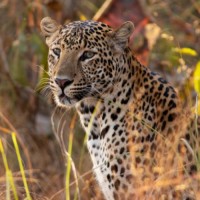 Big Cats & Breathtaking Birds of IndiaMarch 9 - 26, 2026, w/Pallas's Cat extension
Big Cats & Breathtaking Birds of IndiaMarch 9 - 26, 2026, w/Pallas's Cat extension
-
-
Peg Abbott

Peg Abbott is the owner and lead guide of Naturalist Journeys, LLC. She has been designing, guiding, and organizing natural history tours for more than 25 years, working for the National Audubon Society and other organizations before launching Naturalist Journeys, LLC in 1998. Her work has taken her from Alaska to Africa and Argentina, as well as many other locations around the world. She has conducted research on several bird and mammal species and keeps a close interest in Yellowstone and Mexican wolf reintroduction projects. Her interests include all aspects of natural history and geology. After 20 years in and around the Yellowstone area, Peg relocated in 2003 to the birding mecca of Portal, AZ.
Photo credit: Carol Simon
Other trips with Peg Abbott
-
 Vibrant Vietnam: Birding & Nature from North to South FULL - Check out Biodiverse Bhutan!March 28 - April 10, 2025, w/Mekong Delta River Cruise extension
Vibrant Vietnam: Birding & Nature from North to South FULL - Check out Biodiverse Bhutan!March 28 - April 10, 2025, w/Mekong Delta River Cruise extension -
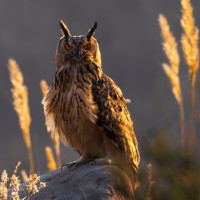 Wild Italy: Venice, the Dolomites, and Bologna Only one space left!May 18 - 30, 2025
Wild Italy: Venice, the Dolomites, and Bologna Only one space left!May 18 - 30, 2025 -
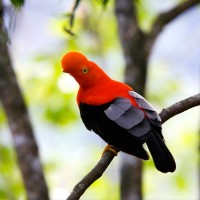 Incredible Ecuador: Chocó GaloreOctober 2 - 11, 2025
Incredible Ecuador: Chocó GaloreOctober 2 - 11, 2025 -
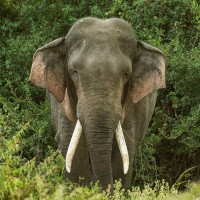 Island of Wonder: Birds & Nature of Sri Lanka FULL - Check out Wild Borneo: Endemic Birding & Nature!November 10 - 22, 2025, w/Mannar Island extension
Island of Wonder: Birds & Nature of Sri Lanka FULL - Check out Wild Borneo: Endemic Birding & Nature!November 10 - 22, 2025, w/Mannar Island extension -
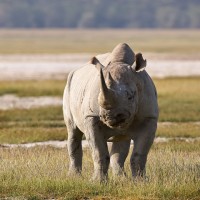 Tanzania: Wildlife & Birding SafariFebruary 9 - 22, 2026
Tanzania: Wildlife & Birding SafariFebruary 9 - 22, 2026
-
Pace & Protocols +
Photo credits: Banners: Thimphu, Bhutan, Dr Vikramjit Kakati via Creative Commons; Golden Langur, M. Swarnali via Creative Commons; Rufous-necked Hornbill by Rohit Naniwadekar via Creative Commons; Great Buddha Dordenma, Christopher J. Fynn via Creative Commons; Female Great Hornbill Debrup Chakraborty via Creative Commons; Golden Eagle Photo Credit/ Avijit Sarkhel; Black-throated Sunbird by JJ Harrison via Creative Commons. Thumbnails: Golden Langur (NJ Stock), Black-necked Crane (NJ Stock), Asian Elephant (NJ Stock), Rufous-necked Hornbill (NJ Stock), Fire-tailed Myzornis (NJ Stock), Asian Emerald Cuckoo (NJ Stock), Indian Rhino (NJ Stock), Blood Pheasant (NJ Stock)


















